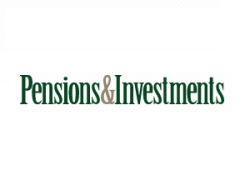
Tracking the phenomenal growth of the ETF market
Over the past 15 years, the number of institutional investors that reported using exchange-traded funds or exchange-traded products increased 2,086%, rising to 3,367 institutions located in 50 countries in 2012, from 154 in 14 countries in 1997.
At the end of 2012, the global ETF/ETP industry had 4,728 ETFs/ETPs, with 9,707 listings and assets of $1.95 trillion, from 206 providers listed on 56 exchanges. The 10-year compound annual growth rate of global ETF and ETP assets at the end of 2012 was 29.6%. ETFs and ETPs listed in the U.S. accounted for 69.2% of the total assets at the end of 2012.
(The data cited are based on recent analysis of regulatory filings and mutual fund holdings as collected by Thomson Reuters/Lipper and documented in a new report, “ETFGI Institutional Users of ETFs and ETPs, 2012 Review.”)
Our findings show institutional investors still account for the majority of the use of ETFs/ETPs in the U.S. as measured by assets held. At the end of 2012, 51% of the $1.35 trillion invested in ETFs and ETPs listed in the U.S. was reported in holdings by institutional investors. Institutions reported holding 53% of all U.S.-listed ETF assets and 35% of all U.S.-listed ETP assets.
The reported institutional vs. retail ownership of U.S.-listed ETFs is 53% institutional and 47% retail (retail being an investor in ETFs with assets less than $100 million). We would estimate the actual split in the use of U.S.-listed ETFs is closer to 60% institutional and 40% retail. Many institutions that use U.S.-listed ETFs are located in countries outside of the U.S. In many countries, U.S.-listed ETFs are registered for sale and in many cases also cross-listed.
From 2005 through 2012, there has been a 92% increase in the number of institutions reporting using one or more ETFs or ETPs, rising to 3,367 institutions globally from 1,752 in 2005. The reported use of ETFs and ETPs has grown at a 6.9% compound annual growth rate in the five years through 2012.
Institutional investors around the world using ETFs and ETPs have grown at a 6.9% compound annual growth rate in the past five years. Some 3,367 institutional investors in 50 countries reported using at least one ETF or ETP in 2012.
In 2012, the top four types of firms reporting holding ETFs and ETPs were: investment advisers; investment advi-sers/hedge funds; hedge funds; and banks and trusts. Thomson Reuters has 18 categories of firm types.
The five-year compound annual growth rate of 8.9% for “investment advisers” makes them both the largest user segment, with 2,001 firms in 2012, and the fastest growing segment. Sixty brokerage firms reported holding ETFs/ETPs in 2012, and as such they are ranked fifth highest in absolute number of firms reporting holding ETFs/ETPs, but second based on a 7.9% five-year compound annual growth rate.
The ETF success story is one of unprecedented growth over 20 years. In fact, the compound annual growth rate in assets invested in ETFs and ETPs has been 29.6% in the decade through 2012. From 2005 through the end of 2012, the number of ETFs grew 642%, rising to 3,338 from 450, while the assets in ETFs increased 321% to $1.75 trillion from $417 billion. The number of ETPs has grown to 1,390 from 56, while assets have increased 2,067% to $195 billion from $9 billion. Worldwide, ETFs and ETPs breached the $2 trillion milestone early in 2013.
To put these numbers in perspective, it took ETFs in the U.S. 18 years to accumulate $1 trillion, while it took mutual funds 66 years.
The venerable SPDR S&P 500 tops the ETF/ETP list as the product held by the most firms globally in 2012. The SPDR, which was the first U.S. ETF to list in 1993 and subsequently launched an industry, continues to attract the lion's share of assets because it is a product that delivers a simple, transparent and liquid way to gain exposure to 500 diverse stocks in one inexpensive trade. Similarly, the SPDR Gold Trust, or GLD U.S., which is the second most widely held ETF/ETP globally, allows investors to purchase exposure to gold bars (a trade not available to many investors, especially financial advisers and retail prior to the GLD's launch in 2004).
ETFs are democratic tools providing institutions, financial advisers and retail investors with the same easy-to-access product at the same annual cost regardless of the investors' size or scale, all of which makes ETFs/ETPs alluring products.
Sixty-two percent of ETF/ETP users captured in 2012 reported holding five or more different ETFs/ETPs in their portfolios, 30% (1,007 firms) reported holding 20 or more, while 5% (169 firms) reported holding 100 or more.
Ninety-one percent, or 3,048 firms, reported using ETFs and ETPs for equity exposure, while 56% reported holding commodity ETFs/ETPs, and 48% used fixed-income exposures. The use of mixed asset class ETFs/ETPs grew the fastest, a 138% five-year compound annual growth rate; fixed income, 27%; commodities, 19%; currencies, 18%; and equities at 6%.
We expect the use of ETFs and ETPs to continue to grow among investors globally and the compound annual growth rate over the next five years to be in the 20% to 25% range. This would see assets in the global ETF and ETP industry more than double by the end of 2016.
http://www.pionline.com/article/20131028/PRINTSUB/310289985/tracking-the-phenomenal-growth-of-the-etf-market
